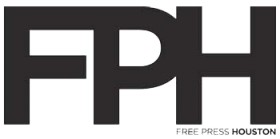In the movie The Usual Suspects the character that turns out to be Keyser Söze says, “The greatest trick the Devil pulled was convincing the world he didn’t exist.” Actually that line is historically credited to 19th-century French writer Charles Baudelaire.
Nonetheless the phrase popped into my head as I looked at a series of photos depicting Josef Stalin and three of his posse. All the photos are the same. In the original photo Stalin and three his staff, or fellow officers in the ruling Communist government, stand side by side smiling, all buddy-buddy and rosy cheeks. The next two pictures are of this photo as seen in successive Russian history/text books. In the next book it’s Stalin and two of his posse. In the last book it’s Stalin and one other guy. Obviously the missing figures were literally photoshopped out of history.
The exhibit Faking It: Manipulated Photography before Photoshop contains approximately 180 photographs from the 1840s up to the end of the 20th-century. All of the photos are examples of images that have in some way have been manipulated. Faking It will be on display at the Museum of Fine Arts, Houston through August 25.
The press notes remind that while Photoshop (Adobe®) has increased the ability to doctor photos “major artists like Gustave Le Gray, Edward Steichen, Weegee and Richard Avedon have been fabricating, modifying and otherwise manipulating camera images since the medium was first invented.” Indeed examples of these artists are on display as well as many other prominent names and the different galleries give the viewer a perfect overview of the evolution of photography. Daguerreotypes pop up here and there and of course there are black pieces of thick paper that you can hold over said daguerreotypes to negatively light them and see the image to a greater degree of illumination.
As easy as it is for you or me to blend the photo of one’s face with the visage of a cat with today’s technology so did primitive innovators find ways of double-processing, erasing or just making ghostly images for the joy of experimentation. And that’s what Faking It celebrates with abandon.
There are seven galleries sectioned by theme. Picture Perfect explores 19th-century concepts of adding hand painted color to the then state-of-the-art photography on display. Artifice in the Name of Art puts the focus on advances in the concept of every picture telling a story and covers 1850 through 1900. Politics and Persuasion presents images that were modified for political ends, like the previously mentioned Stalin photos. Also in this gallery are photos of Hitler as seen in magazines, and one photo portrays Hitler and Leni Riefenstahl and others yet their companion Goebbels is erased in a subsequent magazine reproduction.
Novelties and Amusements continues exploring innovators of early 20th-century photographers and their penchant for severed heads. To wit: a man juggling several of his heads or heads that have been separated from the subject. Pictures in Print includes images shot for magazines. In particular the Doe Eye cover of the January 1950 Vogue magazine beckons interest. The final two galleries are Mind’s Eye emphasizing prints from the 1920s through the 1940s, and Protoshop that includes today’s version of image manipulation.
This is a fascinating program more than worthy of your attention. The ironic thing is that imagery that was produced with blood, sweat and tears in another era is now nothing more than the latest smart phone app.
- Michael Bergeron
 Free Press Houston
Free Press Houston


